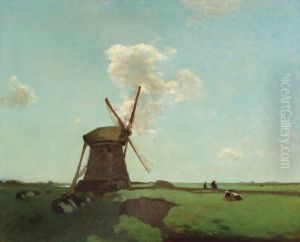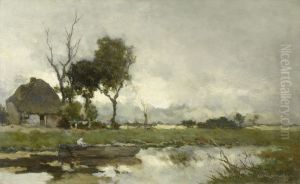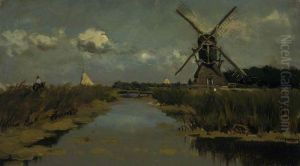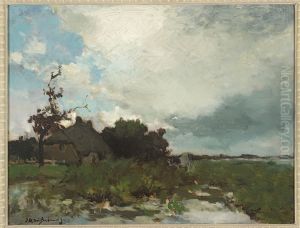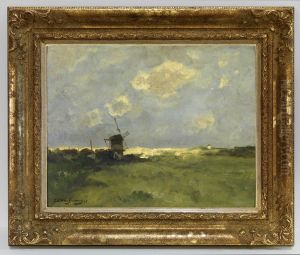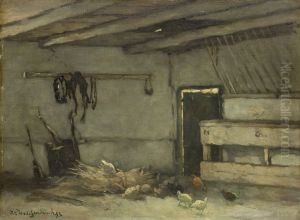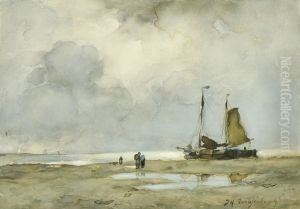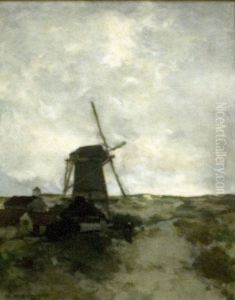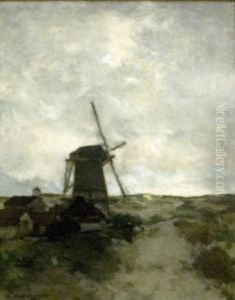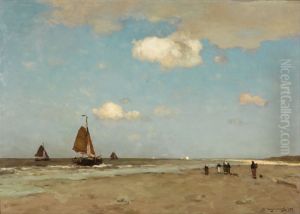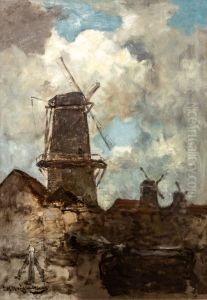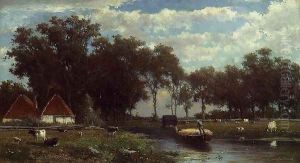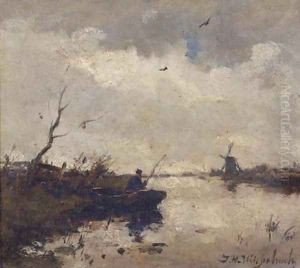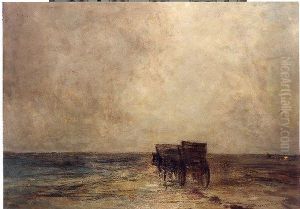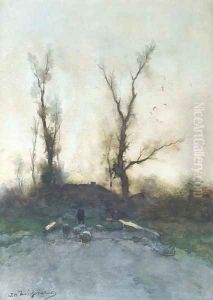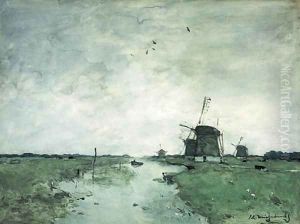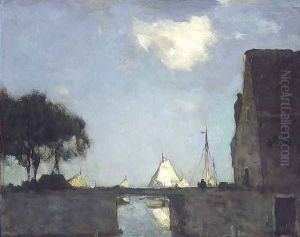Johan Hendrik Weissenbruch Paintings
Johan Hendrik Weissenbruch, also known as Jan Hendrik Weissenbruch, was a Dutch landscape painter and etcher who was an important figure in the Hague School, an art movement that flourished in The Hague during the latter half of the 19th century. Born on June 19, 1824, in The Hague, Netherlands, Weissenbruch displayed an early interest in art. He studied at the Royal Academy of Art in The Hague and was influenced by the 17th-century Dutch masters, which is evident in his choice of subjects and his fresh, atmospheric style.
Weissenbruch's work is characterized by his masterful depiction of light and atmosphere, which he achieved through subtle color palettes and a focus on the effects of light on the landscape. He often painted Dutch polder landscapes, the flat lands including many canals, and is known for his depiction of skies and clouds which gives a sense of spaciousness and tranquility.
Throughout his career, Weissenbruch experimented with various styles and techniques, including a looser, more impressionistic approach in his later years. He was a prolific artist, creating a large body of work comprising oil paintings, watercolors, and etchings. His work was appreciated during his lifetime and he exhibited widely, both in the Netherlands and internationally.
Weissenbruch was also a member of various artistic societies, including the Pulchri Studio in The Hague, which was an important venue for artists of the Hague School to exhibit their work. Although he achieved success and recognition during his lifetime, his work became even more appreciated posthumously, influencing future generations of Dutch landscape painters.
Johan Hendrik Weissenbruch died on March 24, 1903, in his hometown of The Hague. Today, his works are held in major museums across the Netherlands and the world, and he is celebrated as one of the leading figures of the Hague School and a master of the Dutch landscape genre.


